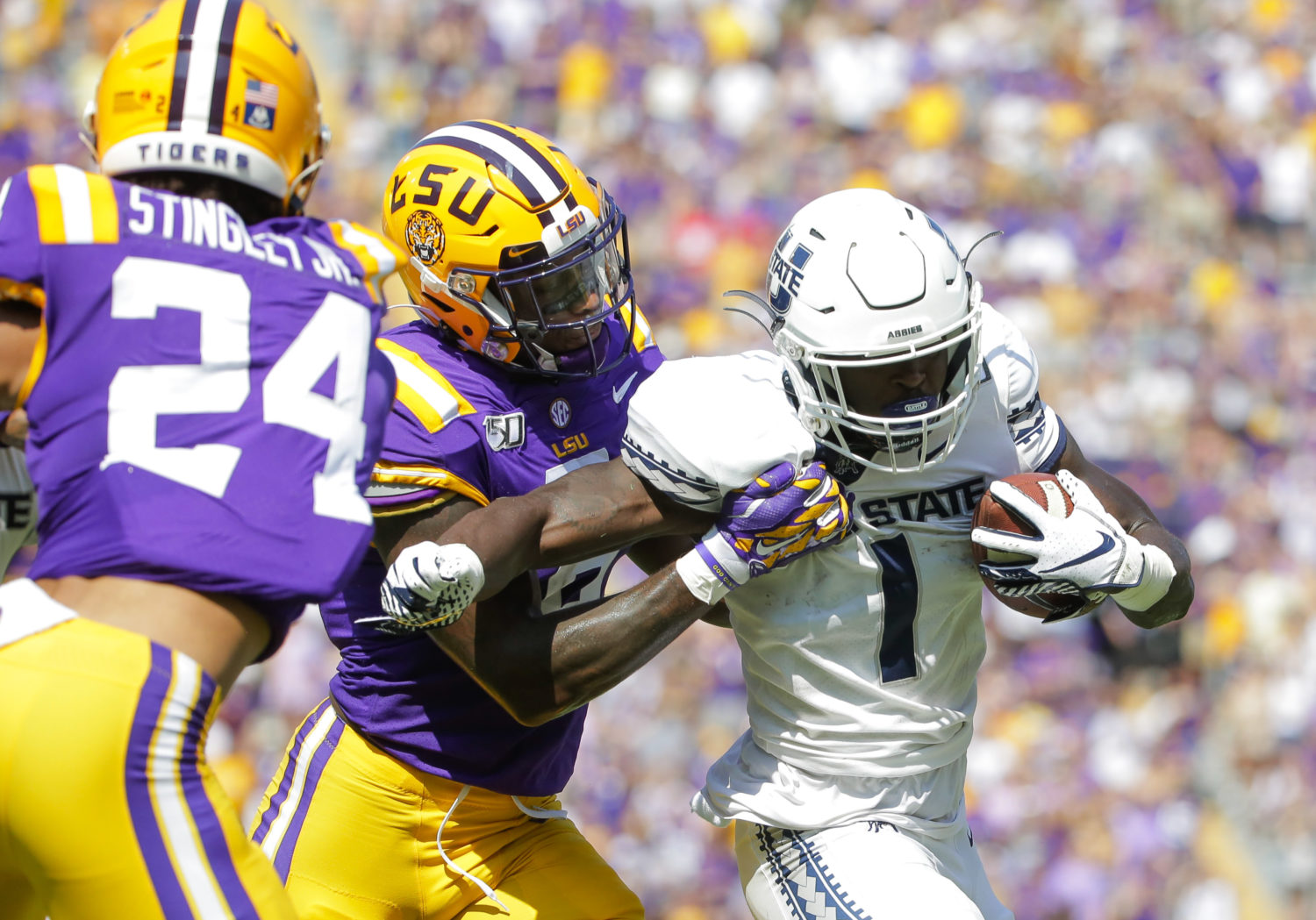
LSU football: Improved complementary football a significant step
By Les East
Published:
LSU played complementary football better on Saturday than it had all season.
The Tigers’ 42-6 victory against Utah State in Tiger Stadium was different than their other four wins.
LSU possessed the football longer than it had in any other game – and by a significant amount.
It held the ball for 41 minutes and three seconds against the Aggies. That’s more than seven minutes longer than its previous high – 33:53 vs. Texas.
Even though LSU made such a significant jump in how long it held the ball, the Tigers also scored their fewest points this season. The 42 points were three fewer than the previous low against Texas for the nation’s highest-scoring offense (57.8) entering Saturday’s game.
Given those numbers, it could be argued that LSU didn’t take full advantage of its offensive opportunities – but actually those numbers showed an evolution of the offense, as well as the defense.
Normally points scored are the primary, if not sole, gauge of an offense’s success. But not in this game, not in this context.
It was clear early in this game (and even predictable before the game) that the Tigers would not have to match or even come close to matching their gaudy scoring average to win this game.
But they needed to find a better running game than they had shown in the first four games.
They had to bring a running threat more in line with the threat they already had established with their passing game. LSU needs to keep future opponents honest.
The Tigers needed to reduce the amount of time that their defense spent on the field, especially with temperatures in the mid-90s and August-like humidity.
So they went out with a new commitment to running the football while having minimal impact on the passing game’s productivity. It was a tricky balancing act that offensive coordinator Steve Ensminger and passing game coordinator Joe Brady hadn’t gotten a good handle on during the first four games.
But this time it worked.
LSU ran the ball a season-high 51 times, 15 more than the previous high against Vanderbilt, for a season-high 248 rushing yards and a robust 4.9 yard average.
“We wanted to run the football more,” Tigers coach Ed Orgeron said. “There will be some games where we will have to use that type of time management.”
On the flip side, the Tigers had “just” 353 passing yards, eclipsing their season low against Georgia Southern by 3 yards. But Joe Burrow threw five touchdown passes for the third time this season, including his school-record six against Vanderbilt. He also became the first LSU quarterback to pass for more than 300 yards in four consecutive games.
More running, better running, more time of possession, and very nearly as much passing productivity. That’s a nearly perfect execution of the game plan.
“It wasn’t as fun,” Orgeron said. “But it worked.”
It sure did; LSU had 601 yards.
The tweaked offensive approach benefited the defense. But it wouldn’t have worked nearly as well had the defense not done its part with perhaps its best performance of the season.
Georgia Southern had just 98 total yards in the opener but Utah State (159) didn’t have many more. The Tigers allowed just 19 rushing yards (n 22 attempts) and intercepted the Aggies three times.
Yes, LSU held the ball longer because it ran better and had fewer big plays (though still more than enough) in the passing game. It even had a 99-yard drive.
But the time of possession disparity was also due in the large part to the suffocating defense, which allowed just one third-down conversion in 12 tries.
The ability to run the ball and pass it consistently well, and to stop both the run and the pass consistently, will produce a significant advantage in time of possession.
When your offense helps your defense and your defense helps your offense, you win a lot of football games.
LSU did exactly that against Utah State.
More important, LSU now knows it can do with an SEC showdown against Florida looming next Saturday in Tiger Stadium.
Les East is a New Orleans-based football writer who covers LSU for SaturdayDownSouth.com. Follow him on Twitter @Les_East.







